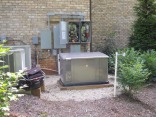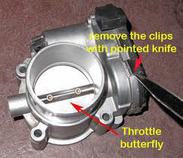
ncgenerators.com
Voltage Drop and Transients
New technology certainly provides advantages but due to the sensitivity and crucial nature of data or imbeded logic, voltage dips or spikes should be avoided.
Proper calibration or fuel supply play a huge part in reference to power quality and in preventing voltage dips or spikes, however properly sizing your system is the first step.
For most stand by systems used only during utility power losses, 67% usage of output capacity should be the goal.
Most electrical appliances can work with voltage levels at plus or minus 10% of the rated voltage.
Engine speed directly effects the voltage output. Voltage output will go lower if engine speed drops below designed rpm levels or go higher if engine speed rises above the designed level. Several factors will influence engine speed when loads are applied, but the three most important, generator output capacity compared to the load attachment, governor calibration and the fuel source.
If a generator is undersized for the loads applied, the engine will not be able to compensate for additional resistance on the rotor. The rotor's magnetic flux or strength as well as speed effects the voltage output level. If overload potential exist for a generator, it is possible that during some scenarios the problem may not present itself, but if there is potential, it will eventually create failure.
As electrical loads attach to the generator system, the engine speed will decrease, it is the governor's job to bring the engine back up to the speed necessary to deliver the correct voltage output, typically 1800 - 3600 rpm. If govenor reaction is too fast, spikes can occur and they are just as bad as low voltage levels, typically good reaction to load is appx. 2 seconds. If the governor calibrations are not correct, even if the system and the engine is large enough, the engine reaction to load or increased rotor resistance, will not occur within an acceptable time frame.
If the fuel source is not adequate for what the engine needs to function at the designed speed, generator output capacity, or calibrations would not matter. The engine could not recover and the results would either be low voltage levels or transients.


